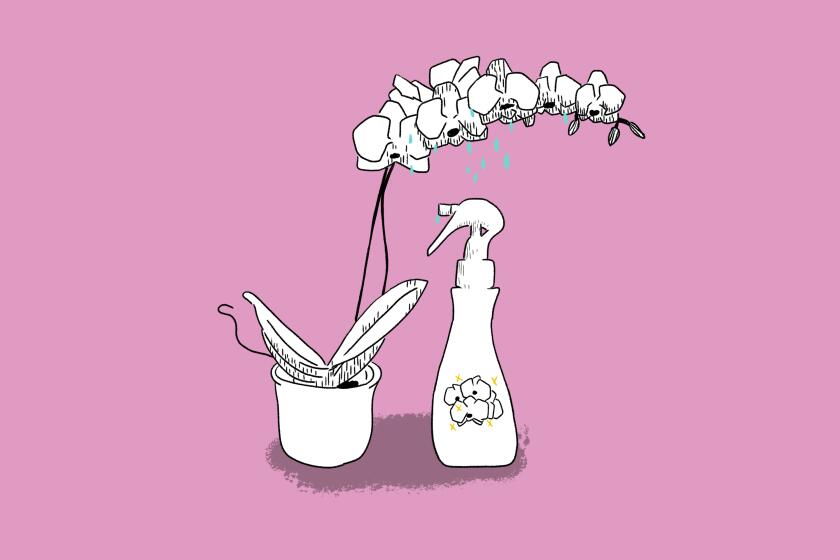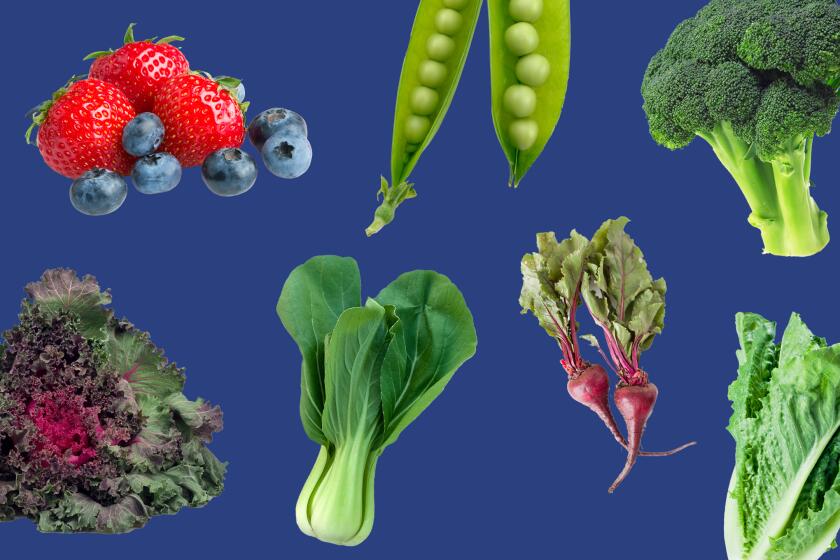
- Share via
Enchanting. Extraordinary. Entrancing.
Really, there aren’t enough compliments to describe the $25-million completion of the magnificent Liu Fang Yuan — the Garden of Flowing Fragrance — at the Huntington Library, Art Museum, and Botanical Gardens in San Marino. But that’s probably for the best, since too many embellishments would go against the core aesthetic of the now 15-acre space commonly known as the Chinese Garden, which finally opens to the public on Friday.
The newly completed garden should have opened in May, with great fanfare and many public events, but the COVID-19 pandemic ended those plans and forced the closure of the institution for several months. In this tiny respect, the pandemic The delay has been a bit of a gift: It gave the landscapers more time to complete plantings, and now that the Huntington has reopened, with social distancing rules limiting daily attendance, visitors will be able to experience the Chinese Garden without the usual crowds.
Fall is the gentler time to grow edible crops throughout Southern California. Here’s what you should be planting, in addition to the compost, manure and other items you’ll need to make your garden the best it can be this season.
That’s a lucky thing, because the garden is a meditative spot, with something to inspire or delight at every step — turtles posing in the Lake of Reflected Fragrance, near the weaving Bridge of the Joy of Fish; the intricate pebble mosaics on the walkways and courtyards; the huge contorted oaks sprawling over the new courtyard outside the Flowery Brush Library; the garden’s handmade charcoal-colored roof tiles and swooping roofs; the whimsical cutouts in the freestanding walls; the giant limestone rocks looming throughout, like sculptural deities.
Experiencing the Garden of Flowing Fragrance will take patience. Because of the pandemic, all admissions to the Huntington are by reservation only, even for members, who enter for free. Timed-entry tickets become available at noon every other Tuesday, including Oct. 6, but because attendance is limited, it’s likely slots will fill quickly for people wanting to visit on the Chinese Garden’s official opening day.
But persist. (Masks are required at all times at the Huntington. And be prepared for questions about your health and a temperature check before you enter.)
The No. 1 reason people kill their orchids is they overwater them. An expert offers tips on how to keep them alive.
Bring a smartphone, unless you are well versed in Chinese history and calligraphy. The pavilions, courtyards and many of the larger rocks reveal a poem or name carved in calligraphy, China’s most popular art form, and those words can give new meaning or insight into the scene before you. For nonscholars, the Huntington has created audio guides and a GPS map you can access on your smartphone to get descriptions of what you’re seeing or the translations of the characters carved into wood or rock.
Indeed, the garden’s place names are poetry in themselves: consider the Studio for Lodging the Mind, the Terrace of Shared Delights, the Verdant Microcosm (dedicated to miniature potted landscapes known as penjing), and at the southern corner of the garden, at the bottom of the canyon, next to the stream, the Pavilion for Washing Away Thoughts. (That place should be popular these days.)
Just don’t go overboard in your excitement. The best way to honor this garden, which feels like part puzzle and part benediction, is with spare descriptions, the kind Chinese scholars use to describe good calligraphy or evocative rocks, says garden curator Phillip Bloom. When something is understated, we can better see its essence, whereas things that are overdone are dismissed as unnecessary embellishments that hide or distract from the truth scholars seek.
So suffice to say, its quiet elegance makes this garden much more than a nature walk.
Fall is prime planting time in Southern California to get berries established for spring harvest and fill your larder with tasty greens, brassicas, peas and root crops all winter long.
It’s a deep and personal dive into Chinese culture, art and history, with multiple layers of meaning and beauty, involving all five elements required for an authentic Chinese garden — architecture, water, plants, rocks and poetry — as well as engaging all five senses of anyone who wanders its intricate paths and courtyards.

Take the Garden of Flowing Fragrance, where you almost feel the sharp scent of pine or the earthy musk of oak.
The word “fragrance” means much more than aroma here, Bloom said. The word also evokes water, which streams into and out of the lake at its center, and the energy that flows through the site, but there is also the literature connection to a famous poem by Cao Zhi, a.k.a. Ts’ao Chih (192-232), about the Goddess of the Luo, a river in northeastern China. Basically, Bloom said, the river goddess falls for the author, and he for her, as she “scatters her fragrance” along the river bank, but their relationship ends when she sadly (and likely wisely) decides “that men and gods must follow separate ways.”
Get The Wild newsletter.
The essential weekly guide to enjoying the outdoors in Southern California. Insider tips on the best of our beaches, trails, parks, deserts, forests and mountains.
You may occasionally receive promotional content from the Los Angeles Times.
And there’s yet another reference, Bloom said, because in Chinese, there’s a phrase about “passing on your fragrance to 100 generations,” meaning you establish a good name for your family and pass it down. “In this case,” Bloom said, “fragrance refers to the impression the garden leaves behind.”

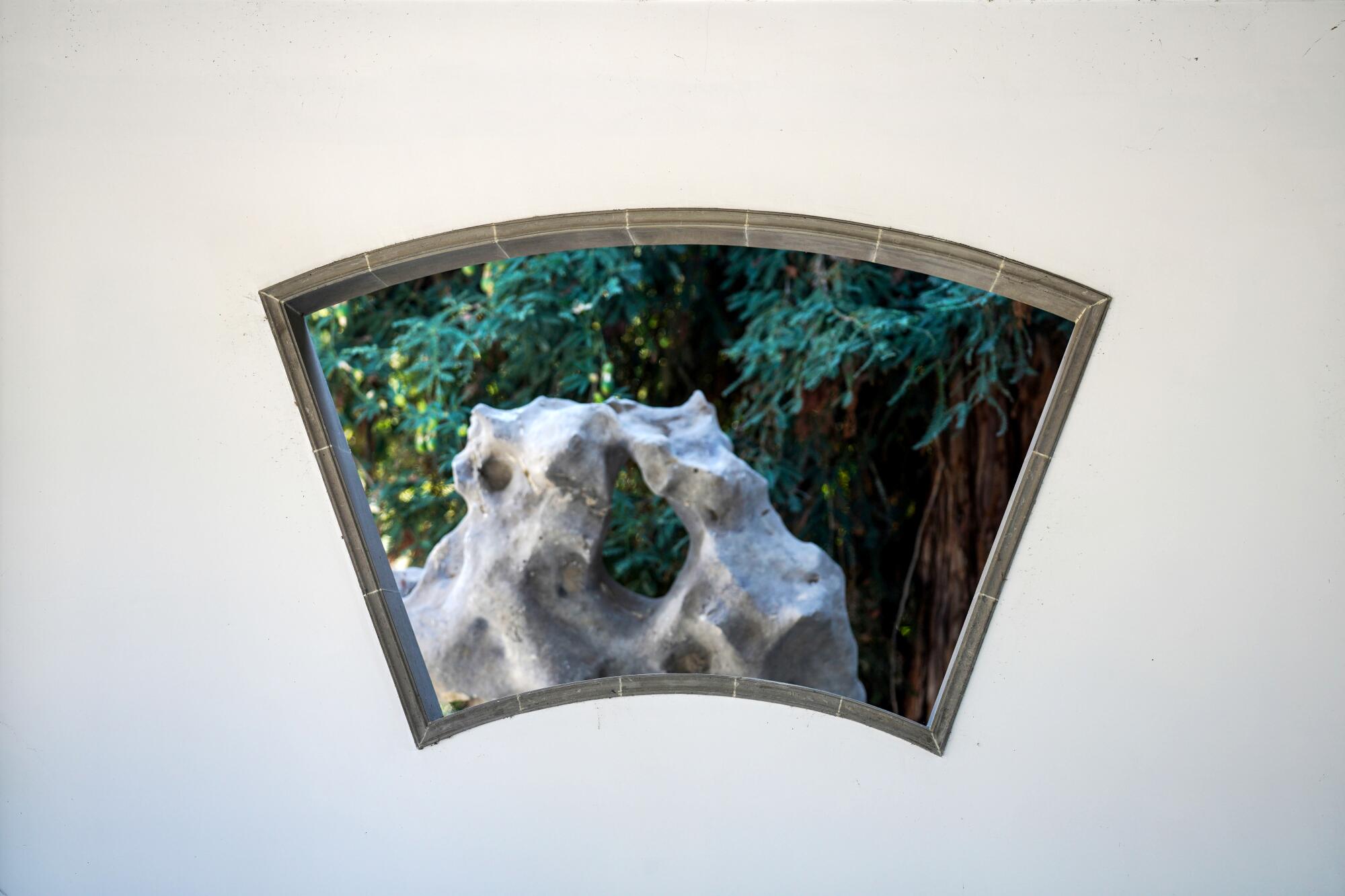
And that is definitely an impression that lingers.
Gardens in China were the province of the wealthy, of course, during the Ming (1368-1644) and Qing (1644-1911) periods, “which represent some of the high points of garden building in China,” said T. June Li, one of the garden’s benefactors and first curators, as well as author of a 2009 book , “Another World Lies Beyond,” about the creation of the Huntington’s newest attraction.
Those gardens were designed not so much to show off plants as to reveal something about the owners, Bloom said.
“They were used like we use our backyards today, as places to eat and drink with friends, and to play, but also to show off their knowledge of literature and poetry and architecture,” he said. “They would name all the features in the garden, even choosing poems they would write on the exterior of certain sites, and either show off their own calligraphy or invite famous local artists to write for them.”
The poems weren’t just for showing off the owner’s knowledge, however, Bloom said. They were meant to help visitors interpret what they were seeing in the garden and thus better understand the owner, “by understanding what the owner finds valuable or meaningful.”

The plants and rocks, while lovely and often inspiring, are pieces of this puzzle, Bloom said. Like any garden, Liu Fang Yuan will change with the seasons, but it will also change perspective as visitors walk its paths. One moment a window or doorway frames a view of a blue sky or a field, but with another step the space is suddenly filled with a meticulously arranged penjing landscape or a towering piece of limestone full of holes.
The limestone holes are important, Bloom said, because they help reveal the essence of the rock.
“The idea is that chi or energy is flowing through the interior of the rock, and the holes give you some sense of what’s going on in the interior,” Bloom said. “Typically, the rocks that are most valued have themes with dynamic shapes. For instance, you know that big rock is really heavy, but it looks like clouds that are very light and energetic. That’s a pretty general aesthetic impulse in Chinese art, most East Asian art really, to value the resonance between the interior and exterior.”
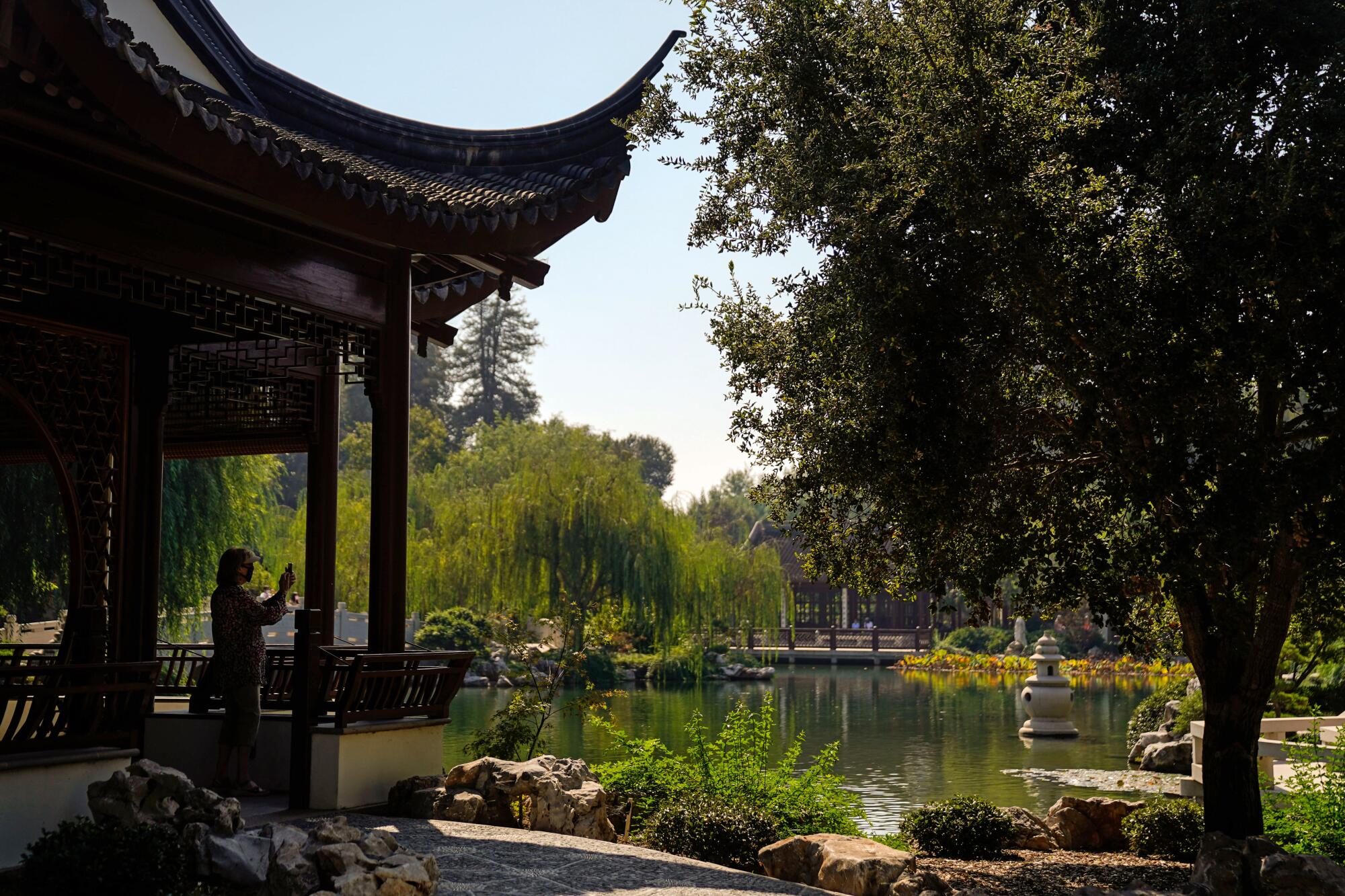
Remember that this is a space with many layers. The Stargazing Tower, for instance, is the highest point in the garden, with commanding views to Mt. Wilson Observatory, but the name doesn’t refer just to its height or its view of the northern sky, Bloom said. It’s also meant to pay homage to famed astronomer Edwin Hubble, whose work at the observatory expanded our understanding of the universe (and whose papers are held in the Huntington’s science library).
The Chinese Garden opened in 2008 with eight pavilions over 3.5 acres, linked by walkways and plantings around a limestone-framed lake. Two pavilions and a rock grotto were added in 2014, at a cost of nearly $30 million paid by individual, corporate and foundation gifts. The plan was always to expand the garden to a full 15 acres, but it took 12 years and nearly $25 million more to pay for the materials and artisans, who came from China to oversee or do the special carpentry, masonry and tile work needed for the project’s final phase, which began in August 2018.
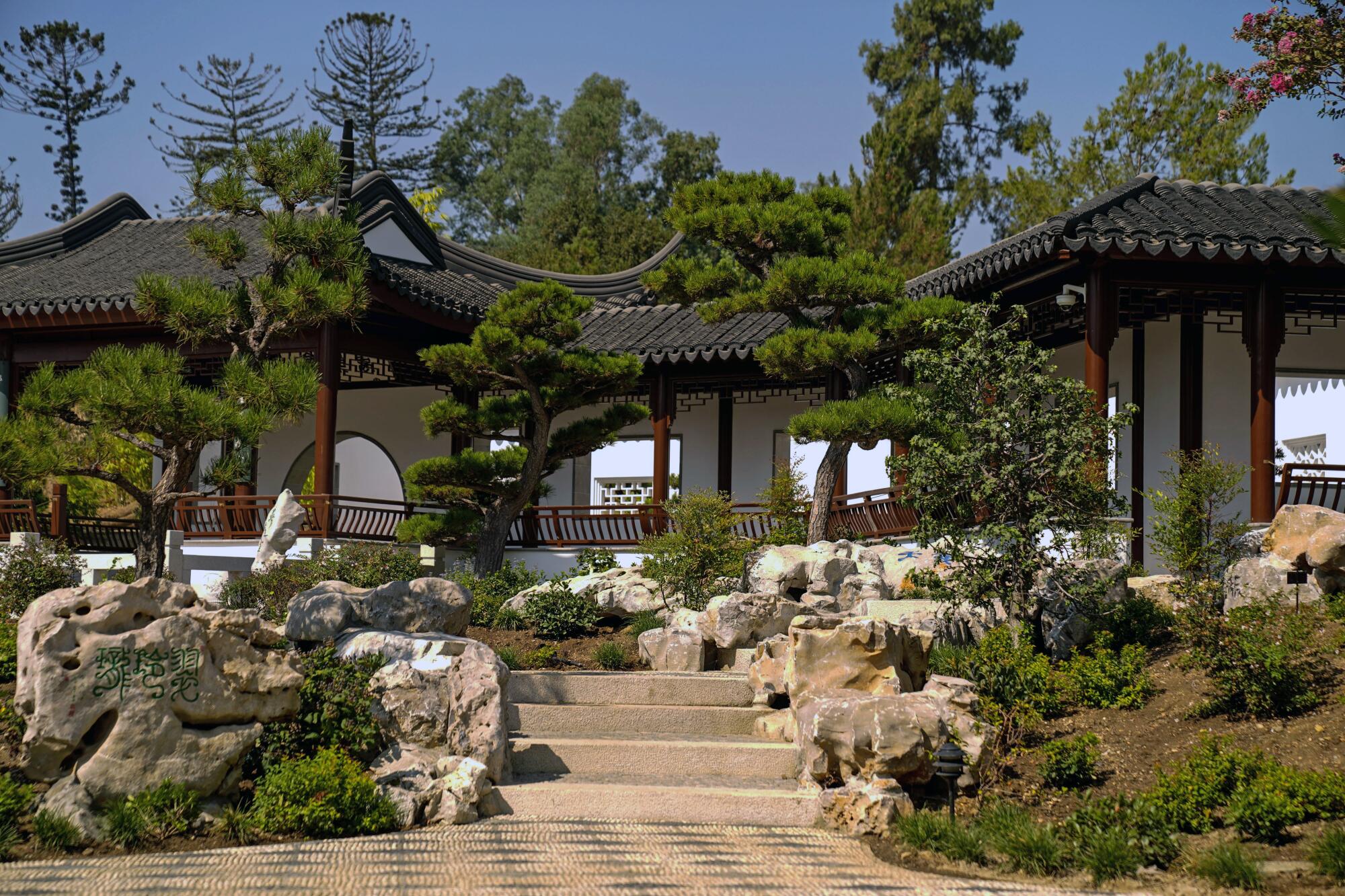
There are still a few things to finish, such as an expanded bamboo grove at the southern edge and the Chinese medicinal herb garden near the northern boundary; the herb garden will be planted this winter, to give the plants a chance to establish during the rainy season.
The older tea room and a new restaurant, next to the Flowery Brush Library, are still closed because of the pandemic, as are the pavilions dedicated to indoor displays of penjing, calligraphy, and other Chinese art and history. But there are still ample examples of penjing in the new garden courtyard known as the Verdant Microcosm and calligraphy throughout, chiseled into massive limestone rocks and in the columns of a pavilion.
The Huntington was envisioned as a major research institution by its founder, Henry E. Huntington, but over the years it’s clearly become a cultural icon, where people come “not to be informed by our research, but just to experience the atmosphere and what we have to offer,” said botanical director Jim Folsom, one of the creators of the Chinese Garden. “Our goal is to tie those things together: How do we take these collections to improve peoples’ lives and bring understanding to the table? The Chinese Garden grew from that.”
And that is Bloom’s greatest wish for the garden — that once we are past the pandemic, it can once again be a classroom and courtyard for shared experiences, such as weekly concerts of Chinese music, regular exhibits of Chinese art and celebrations of Chinese holidays.
“This garden is very special, but I’m proud that the Huntington chose to invest in providing not just a wonderful physical space but all sorts of intellectual explorations of garden culture,” Bloom said. “What ultimately makes this garden special is what you bring to it or do with it. When visitors come to the gardens, they create their own meanings.”
And that, ultimately, is the fragrance that lingers, the one we carry away and return to replenish again and again.


More to Read
Sign up for The Wild
We’ll help you find the best places to hike, bike and run, as well as the perfect silent spots for meditation and yoga.
You may occasionally receive promotional content from the Los Angeles Times.

